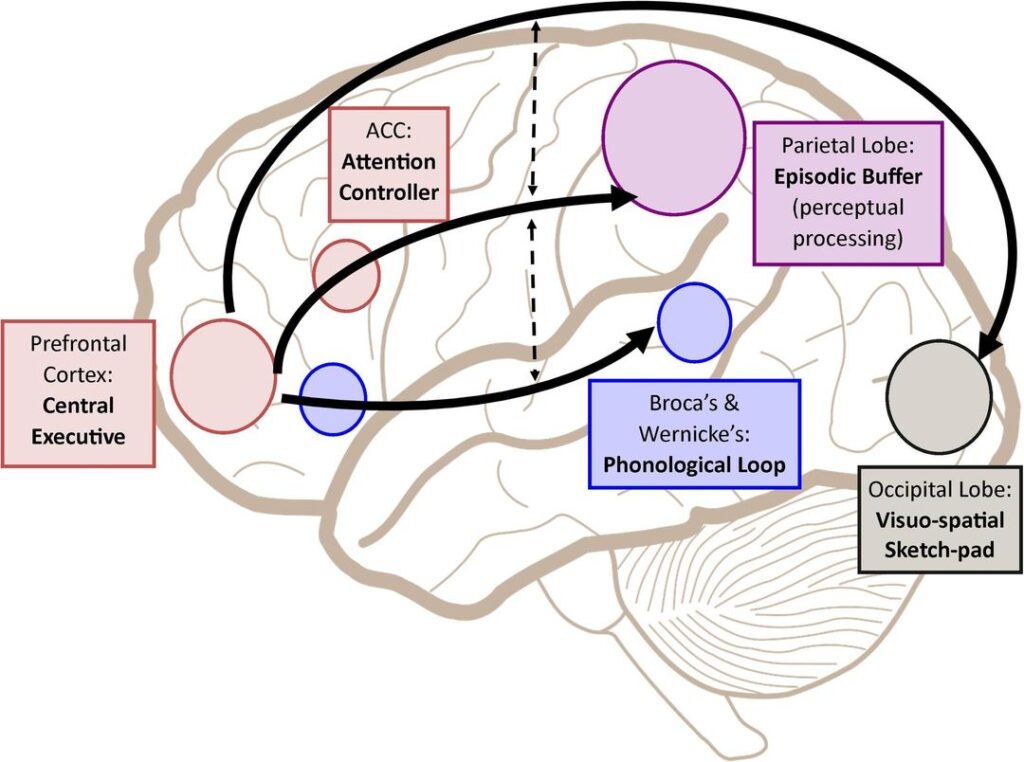
Recently I have been seeing an increase in social media posts requesting assistance with working memory interventions. So I decided to compile a post with a few useful resources on this subject. But first a few words regarding working memory basics.
Working Memory (WM) is a cognitive system with a limited capacity that can hold information temporarily. It is important for reasoning and the guidance of decision-making and behavior and is considered to be one of the core Executive Functions.
The most widely accepted model of WM is the multi-component model proposed by Baddeley and Hitch in 1974. The theory proposed a model containing three components: the central executive, the phonological loop, and the visuospatial sketchpad with the central executive functioning as a control center of sorts, directing info between the phonological and visuospatial components. In 2000, Baddeley extended the model by adding a fourth component, the episodic buffer, which holds representations that integrate phonological, visual, and spatial information.
So the sixty thousand dollar question is: “Can WM be improved directly?” Unfortunately, it cannot!
Melby-Lervåg, Redick, & Hulme (2016) found that working memory training programs appear to produce short-term, specific training effects that do not generalize to measures of “real-world” cognitive skills and as a result do not improve performance on measures of intelligence or measures of “Far Transfer”.
Similarly, Castles, Rastle, & Nation (2018) wrote that: “Current working memory training programs do not improve reading comprehension. Instead, instruction should focus on developing lexical quality at the word level and optimizing children’s knowledge and skills so that limited working memory resources can be used to best effect.” (p. 37)
However, working memory can be improved indirectly by working on a variety of language and literacy tasks.
Below is a list of useful resources discussing working memory as well as some posts discussing the formulation of functional therapy goals aimed at indirectly improving working memory abilities in children with language and learning needs and weak working memory abilities.
- Identifying Phonological Working Memory Struggles and Intervening with Instruction
- Avoiding Working Memory Overload in Students with LDs
- Wait…What??? Guiding Intervention Principles for Students with Verbal Working Memory Limitations
- Clinical Forum on Working Memory in School-Age Children
- Using Explicit and Systematic Instruction to Support Working Memory
- Working memory and language learning: A review
- Understanding Working Memory
- Working memory in the classroom
- Dear SLPs, Don’t Base Your Language Intervention on Subtests Results
- Evidence-Based Executive Functions Interventions for Struggling Learners
- Formulating Functional and Measurable Therapy Goals
- What makes language intervention for school-aged children functional?